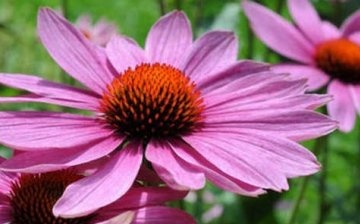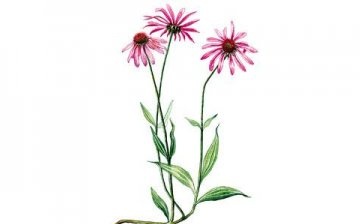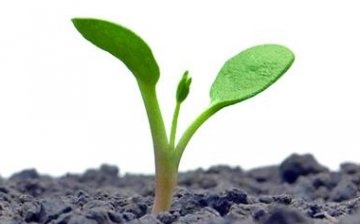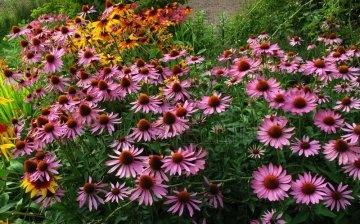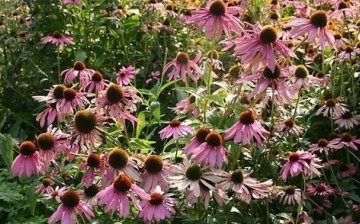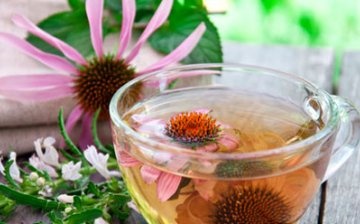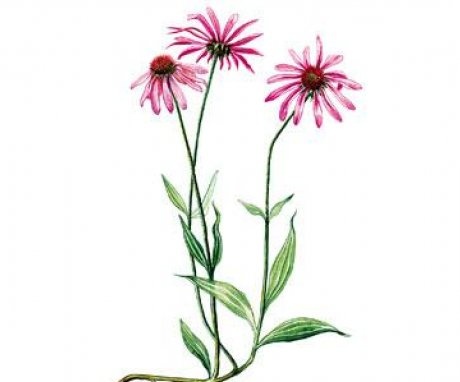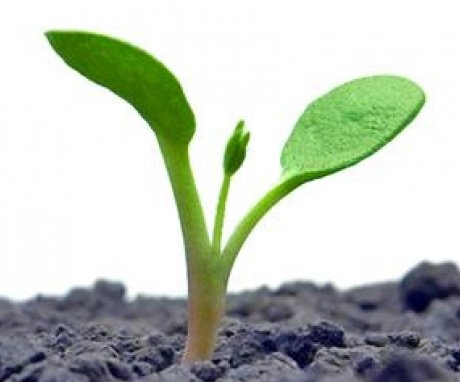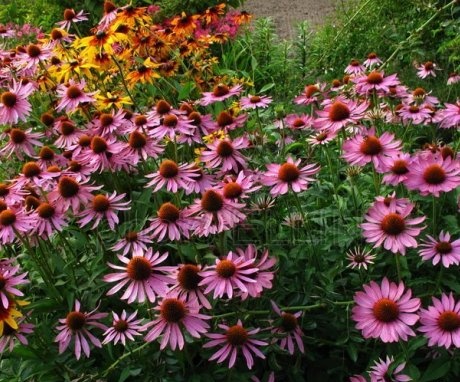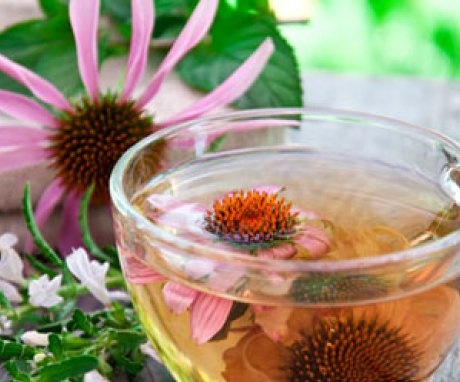Echinacea: description, cultivation, care and use
Echinacea belongs to the category of perennial herbaceous plants. It has quite attractive inflorescences that can decorate the appearance of any flower bed. In addition, echinacea has very beneficial medicinal properties.
Content:
Description of the plant
Echinacea is between 90 and 100 centimeters high. It has straight stems that are characterized by roughness.
Characteristic features of the plant:
- Long, winged petioles hold root leaves.
- The leaves are characterized by serration, broad oval and narrowed to the petiole. The basal leaves are collected in the outlet.
- Stem leaves are characterized by lance, sessile, roughness. They are arranged in the following order.
- Echinacea flower baskets are large enough. Their size can be up to 15 centimeters in diameter.
- The top of the flowers is characterized by sharpness, and their length can reach 4 centimeters.
- The plant begins to bloom in July and ends in September.
- Echinacea flower can be white, crimson, brown, yellow, etc. flowers.
- Echinacea is capable of bearing fruit.
This plant is grown for the purpose of decorating the site or with the need to obtain medicines.
Echinacea cultivation
The process of growing echinacea is not difficult at all. This plant can easily adapt to any climate. It easily tolerates rain, heat, poor soil.
Echinacea can be propagated in two ways:
- Vegetative.
- From seeds.
With vegetative propagation of this flower:
- It must be planted in early spring or late autumn.
- To do this, you need to dig out the rhizomes of the flower and divide them into several parts.
- The resulting new rhizomes are planted in the ground.
This plant is characterized by a strong root system, which allows it to penetrate deeply into the soil. This ability is widely used in the vegetative propagation of a flower.
Echinacea is also propagated by seeds. This type of breeding has its pros and cons.
The disadvantages of seed propagation of Echinacea include late sunrise (the growing season lasts about 40 days).
That is why experts advise:
- Sow seeds in greenhouses.
- In this case, the appropriate level of humidity and heat must be observed.
- Already finished greenhouse seedlings are planted in the garden bed.
- If the seeds are sown directly on the garden bed, then they will sprout very much and in the first year the plant will have only a rosette of leaves.
If you want to achieve flowering of this plant in the year of sowing, then you need to sow its seeds in late April - early March.
To stimulate the growth of echinacea, its seeds are treated with a special solution before planting. In a greenhouse, this plant is capable of germinating at a temperature of 14-15 degrees. Seedlings are planted in the beds in the month of May.
The place for planting seedlings must be chosen very carefully. It is worth remembering that Echinacea does not like excessive moisture in the soil, but drought also negatively affects it. That is why the soil is necessary in moderation moisturize and fertilize.
It is also necessary to choose a sunny place for planting echinacea, which will guarantee an excellent level of flower synthesis.
If the area on which you plan to plant echinacea is characterized by an increased level of acidity, then it can be treated with lime. It is best to plant this plant in the sun, as it loves heat a lot. But, do not forget that this plant can easily tolerate cold.
But during harsh winters, young Echinacea fallows must be covered with fallen leaves to protect them from wind and frost.
Plant care
How to properly care for a plant:
- Echinacea loves moderately moist soils. Therefore, before planting it, the soil must be treated with a special solution with the addition of lime.
- Watering this plant is necessary no more than once every two weeks.
- After flowering, the Echinacea sprouts must be cut off.
- The shoots are removed, otherwise this may lead to their flowering in a different color.
- It is necessary to transplant this plant at intervals of 2-3 years.
- When transplanting, the bushes must be divided into several parts. This procedure must be carried out in early spring before the leaves grow back. Autumn transplanting is best avoided, as echinacea does not tolerate it very well.
Echinacea does not like weeds, so it must be rid of this unwanted neighborhood. In the second year of life from spring, this plant can be fed. For this, complex fertilization of flowers or well-rotted compost with ash is used. This will result in a more lush bloom of the plant.
This plant blends perfectly with phlox, monard, perennial asters, astilbe.
That is why it can be planted in flower beds, which are characterized by group plants. Echinacea flowers do not multiply and do not change due to pollination, therefore, several species of this plant can be planted on the same bed.
Echinacea diseases
Echinacea is characterized by resistance to a variety of diseases and pests, but this process is sometimes observed.
Most often, echinacea succumbs to fungal and viral diseases:
- Fungal diseases appear at high soil moisture.
- They are often caused by disputes that relate to the genus Septoria and Cercospora.
- These diseases are characterized by the appearance of spots on the leaves, which lead to the weakening and death of the echinacea.
- If the disease is detected early, the affected leaves must be removed immediately.
- If the fungal disease is very advanced, then the plant must be treated with fugnicides.
- Viral diseases cause deformation of peduncles, drying of leaves.
- Diseased plants must be removed immediately. This will help preserve the rest of the Echinacea bushes in the garden.
Very often, echinacea is attacked by such pests as bedbugs, mucus, drooling penny. To save echinacea from pests, it is necessary not to overmoisten the soil. Echinacea is often attacked during a rainy summer powdery mildew... To get rid of this disease, it is necessary to remove the affected areas and treat the plant with insecticides.
Failure to comply with agricultural practices can lead to the appearance of pests.
To avoid this, it is necessary to regularly free the soil from weeds, which are carriers of various viruses and diseases. Pests cannot do any harm to the plant, but they can spoil their appearance quite easily. In order to get rid of pests, it is necessary to treat the plant with chemicals as soon as possible.
To avoid a variety of echinacea diseases, it is necessary to provide proper and timely care.
Echinacea use
Echinacea is a decoration of any garden and landscape design... Moreover, it has very good medicinal properties. This plant is used medicinally to treat many diseases.
This plant is often used to treat:
- Epilepsy.
- Gout.
- Female diseases.
- Gonorrhea.
- Arthrosis.
- Inflammation of the oral cavity.
This plant is also highly effective for snake bites. Echinacea is not capable of causing any side effects or addiction. Echinacea is used as an oil (crushed plant leaves mixed with honey), decoctions (plant leaves are poured with boiling water), tinctures (echinacea is infused with alcohol), etc.
With the help of echinacea, the lymphatic system is cleansed, prevents the destruction of cells, fights against the effects of bacteria and viruses, cleanses the kidneys, liver and blood, etc. These beneficial properties of echinacea allow you to maintain human health for a long time.
Also, this plant is effective in the treatment of dysbiosis, bronchitis, alcoholism, arthritis, obesity, hair loss, body cleansing, etc.
This plant is not only an attractive flower that can decorate outdoor areas, but also very effective. remedy for treatment many human diseases.



